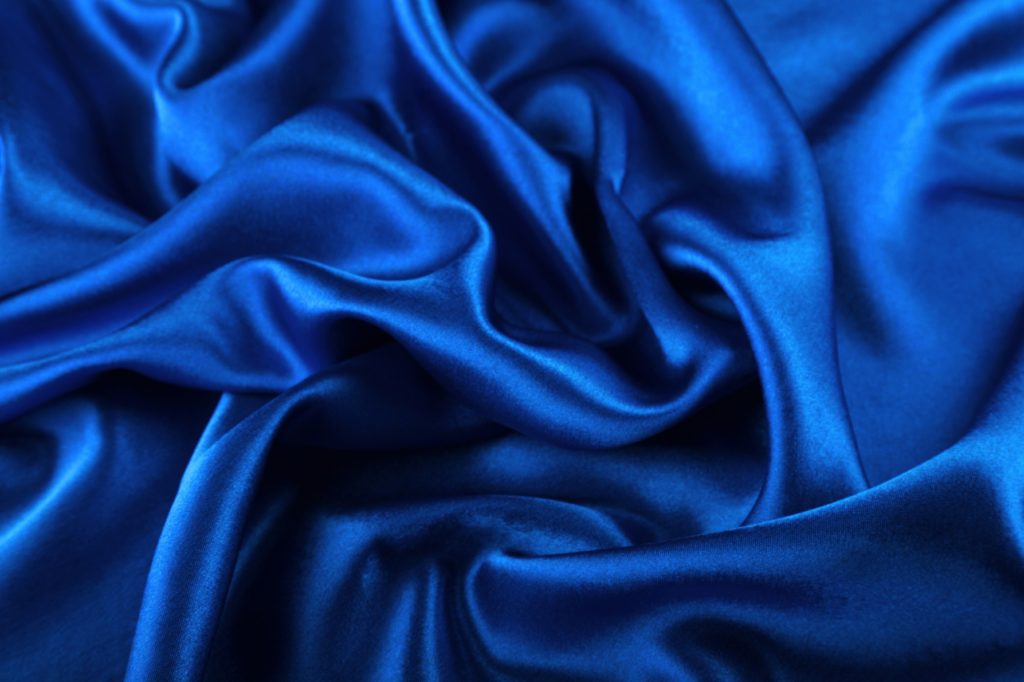
Silk has enticed people for a long time with its lustrous beauty and silky smooth feel. Silks are typically opulent, light- to medium-weight fabrics with a beautiful sheen.
The most refined and most delicate larvae obtained from the cocoons of silk-producing worms and insects weave together to form the most pleasing and most delicate texture. It has never lost its popularity over the decades.
There are two sorts of silk formations: natural and artificial silk. Natural Silk is derived mainly from the cocoons of silkworms. Protein makes up this type of silk. Artificial silk, on the other hand, is created from wood pulp, such as rayon.
Because silks are so expensive, many polyester versions of the various types of fabrics are available. These are less expensive but more difficult to sew. Silk textiles are fragile and should be washed by hand or dry cleaned.
How Many Types Of Silk Fabrics Are There?
Silkworms of many species create various sorts of silk. The chemical composition of silk, however, affects the quality. Here are some different types of silk fabrics:
1. Mulberry Silk:
Silkworms produced by the Bombyx mori moth create the best silk fabrics available. Mulberry silk comes from a diet of only mulberry leaves, so the beautiful fabric is mulberry silk. Sericulture is used in the procedure, and the fabric is incredibly soft and silky.
Mulberry silk is the world’s most sought-after and most delicate silk, thanks to rigorous breeding, a tight diet, and meticulous attention to detail.
Benefit:
- Keeps skin dry
- Prevent skin from overheating
2. Tussar Silk:
Numerous species of silkworms generate Tussar Silk in the moth family and is naturally gold in color. Silkworms often dwell in untamed woods, and the silk is primarily harvested in China, India, Japan, and Sri Lanka.
Benefit:
- It doesn’t wrinkle easily
- Good for traveling
3. Habotai silk:
Habutai, also known as China silk, is a classic silk fabric initially used to line kimonos. The weight of this plain-weave cloth can range from 5mm to 12mm. The majority of the scarves are constructed of 8mm Habotai.
This silk is medium-quality silk that foregoes the durability of mulberry silk in exchange for significant cost savings. The process of making habotai is straightforward: lower-grade silk is sand-washed till it reaches a softness equivalent to higher-grade silks.
Benefit:
- Best for scarves
- Soft lightweight
4. Dupioni Silk:
Dupion silk is a rich, glossy silk fabric that is slightly heavier than other varieties of silk. It’s frequently worn for formal occasions. Weft and warp threads of various sizes are woven together to create a robust, durable fabric with a beautiful sheen.
The occasional black speck that may run through the weave is a remnant of the silk worm’s original cocoon. A silk garment that seems blue from certain angles but green from others may be a dupion.
Benefit:
- Strong and lustrous
5. Chiffon:
Chiffon is translucent, lightweight, and a blast to swish around in. It necessitates cautious handling. A light, matt fabric consists of fine twisted threads spaced out to allow the cloth to be transparent. The addition of billows of fabric to clothes adds dimension.
This fabric is ideal for layering and adding volume. A chiffon overlay offers a gorgeous flowy effect and is commonly used for special events and wedding dresses. Scarves, blouses, and shirts are also made from this fabric.
Benefit:
- Lightweight
- Ideal for occasional dresses
6. Crepe De Chine: (Signifies Chinese Crepe Or Cloth)
A light fabric consists of fibers twisted in opposite directions, with some twisted clockwise and others counterclockwise. Following that, the fibers are woven into a plain-weave fabric. Crêpe-de-chine is a plain-weave fabric with a muted shine and characteristic crimped texture that is light and airy. Moroccan crêpe and crêpe georgette are two more kinds.
Crêpe-de-chine is a lightweight fabric with a beautiful drape ideal for summer dresses, blouses, camisole tops, and lingerie.
Benefit:
- Floaty and soft
7. Organza:
Organza is a sheer silk fabric with a gloss that is exceedingly delicate and sheer. Twisted threads give this fabrics lot of strength. Organza is a smooth-shimmering open-weave fabric. Despite its thinness, the material’s intricately twisted threads make it sturdy and long-lasting.
Because it’s so light, sewing it might be challenging.
Benefit:
- Perfect for collar use
Silk Fabrics Properties:
· Elasticity:
Silk garments, when properly cared for, can retain their shape for a long time. Silk is pliable and has some elasticity, allowing it to reshape itself after being stretched.
· Drying time:
Silk dries quickly, making it ideal for managing your laundry or going about your daily routine.
· Breathability:
Because silk is a lightweight, breathable fabric, it decreases the chance of overheating while you’re out and about.
· Elongation:
Silk has excellent elongation characteristics. Under normal conditions, silk fiber has a 20-25 percent elongation at break. At 100 percent R.H., its elongation at break increases by up to 33%.
· Strongest natural fiber:
Silk is the most durable natural fiber. It contains 18 necessary amino acids as well as natural protein. It contains natural cellular albumen, which boosts skin cell metabolism.
Best Silk Fabrics:
There is no limit to choosing the best fabrics because each fabric has its characteristics, and each person can choose how to use it. But in our choice, the best silk is mulberry silk.
Mulberry silk is the highest-quality silk on the market. Mulberry silk distinguishes itself by the method of production.
Interesting Facts On Silk:
- Eri raw Silk has a milky white color and a texture that is similar to a wool-cotton blend.
- A single silkworm cocoon can provide up to 1.5 kilometers of silk filament.
- Ordinary people were not permitted to wear silk clothing in ancient times.
- Silk fibers in their natural state have traditionally been compared to synthetic fibers. Raw silk, on the other hand, stands out due to its smoothness and non-slippery texture.
Conclusion:
Silk is a natural fabric with a long history of international trade. It is noted for its luster, brilliance, strength, and durability. Silk is a prominent cloth in high-end and fashion design because of its high cost of production, soft feel, and attractive appearance.
Explore:
Our Top Quality & Natural silk fabrics
Avadh Textil works on innovation in Textile Industry.

1 thought on “Silk Fabrics types to choose the Best”